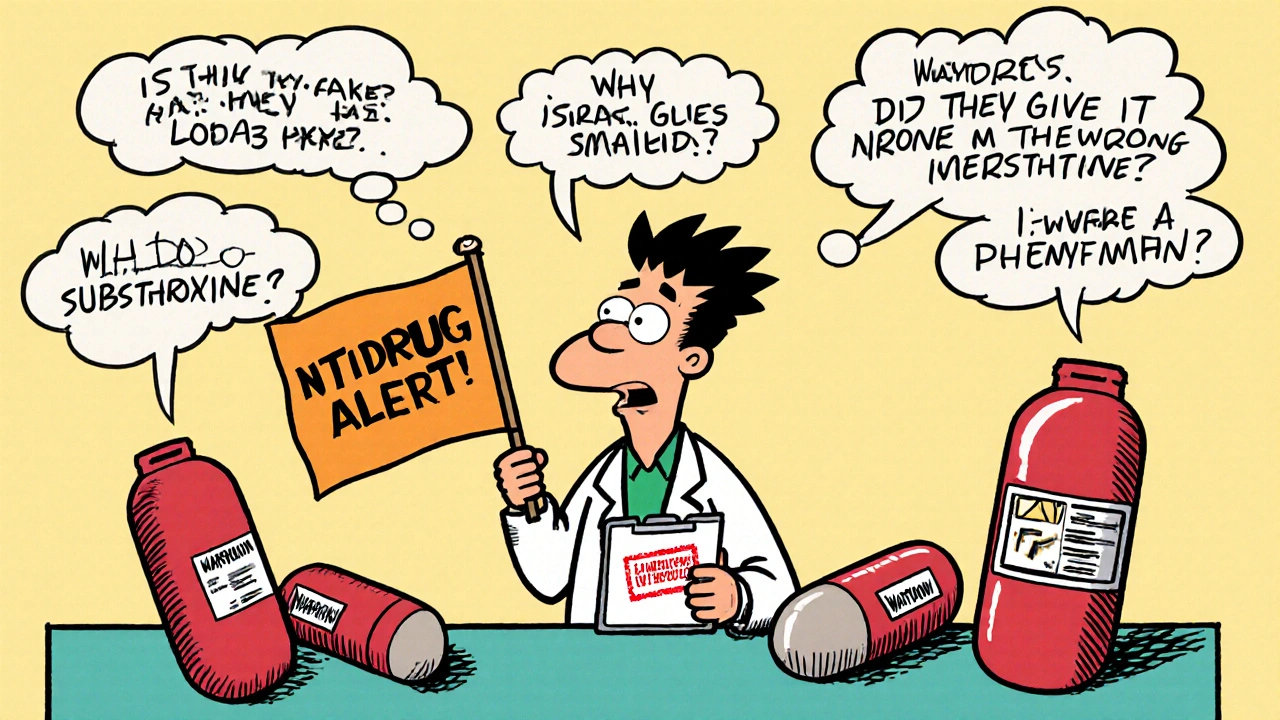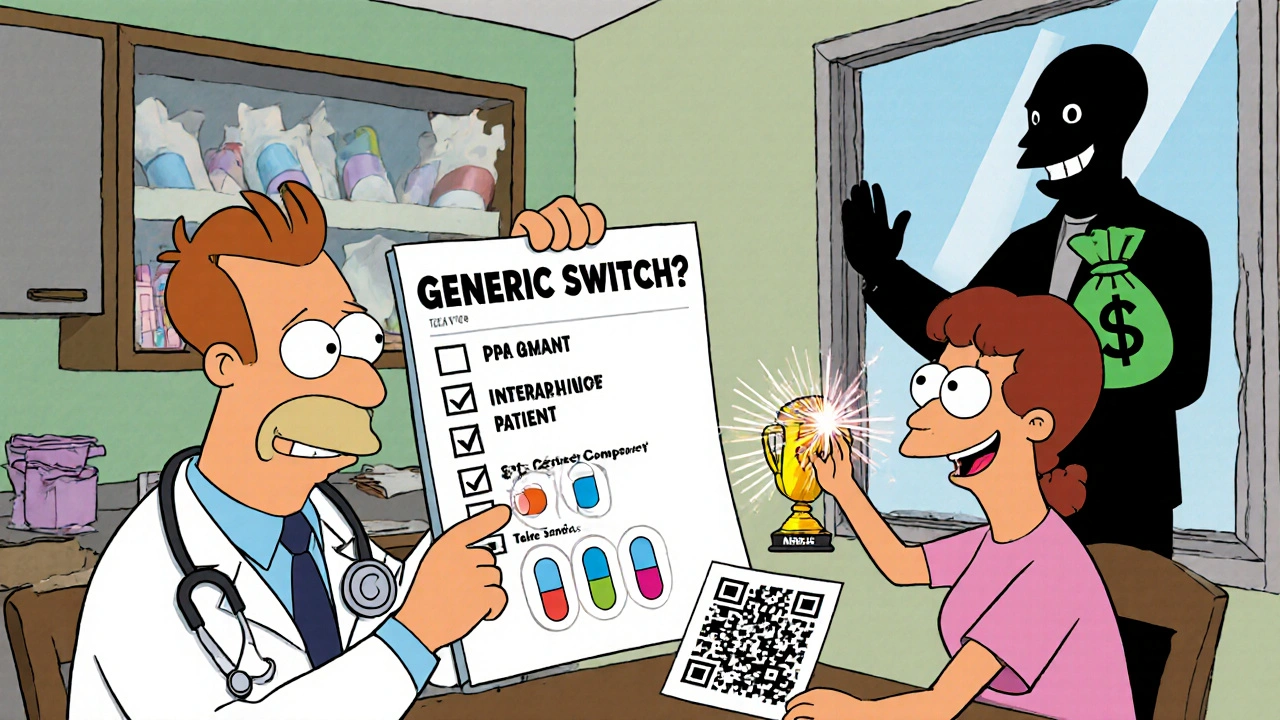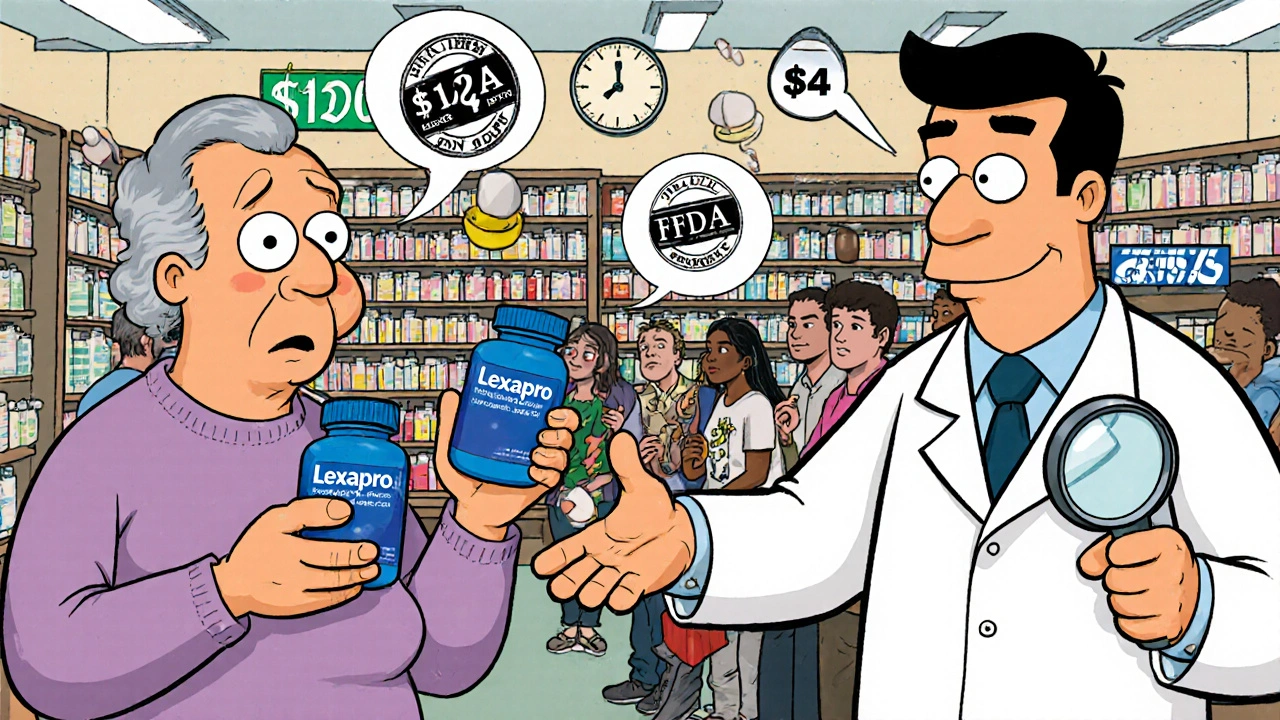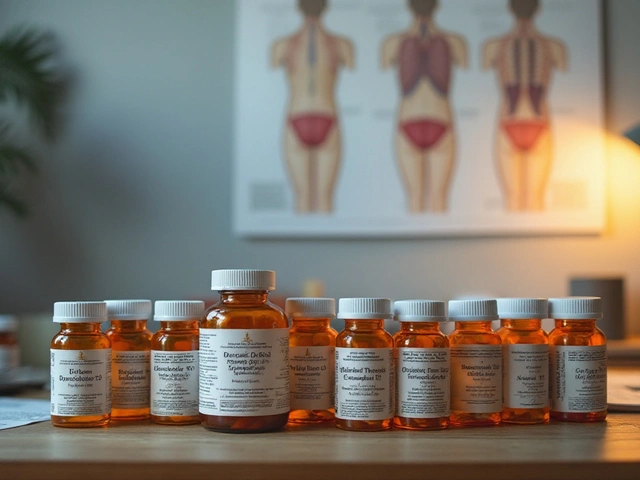What Pharmacists Really Think About Generic Substitution
You walk into the pharmacy with a prescription for Lexapro. The pharmacist hands you a small white pill instead of the blue one you’re used to. "It’s the same thing," they say. "Just cheaper." But you’re not sure. And honestly? Neither is the pharmacist.
Generic substitution isn’t just a paperwork step. It’s a daily tension point in pharmacy practice - a mix of science, patient trust, time pressure, and legal gray areas. Pharmacists are trained to be the final safety check before a drug hits a patient’s hand. But when it comes to swapping brand names for generics, they’re often caught between policy, profit, and patient fear.
The FDA says generics are bioequivalent. That means they deliver the same active ingredient at the same rate and amount as the brand. The average difference in absorption? Just 3.5%. For most drugs, that’s meaningless. But for others - like seizure meds, blood thinners, or thyroid pills - even that tiny gap can mean the difference between control and crisis.
Patients Don’t Trust Generics - And Pharmacists Are the Ones Who Have to Fix It
More than half of patients never hear from their doctor that a generic option exists. So when the pharmacist says, "This is the same," patients hear: "This is cheaper. Is it worse?"
It’s not just about price. It’s about appearance. A patient on a brand-name epilepsy drug for years gets a generic that’s a different color, shape, or even size. Suddenly, they think the medication changed. They stop taking it. Or worse - they take both, thinking they’re supposed to. That’s how medication errors start.
One pharmacist in Ohio told me about an elderly woman who came in crying because her new generic heart medication was "too small." She’d been on the brand for 12 years. The pill looked different. She thought the pharmacy gave her the wrong drug. She didn’t know generics could look different - and that the FDA allows it.
Studies show patient acceptance drops sharply for chronic conditions. Only 72% accept generic substitution for long-term meds like high blood pressure or diabetes drugs. For acute issues like antibiotics? It’s 82%. Why? Because when you’re sick now, you want it to work now. When you’re managing a lifelong condition, you’re scared of change.
And it’s not just older patients. People with mental illness, dementia, or polypharmacy - those taking five or more pills a day - are the most likely to refuse. They’re already overwhelmed. A new pill? A new name? A new color? It’s too much.
Doctors Don’t Help - So Pharmacists Do
Here’s the truth: most prescribers don’t talk to patients about generics. A 2015 survey found that 64% of patients had never heard from their doctor that a generic was available. That means pharmacists are left holding the bag - trying to explain bioequivalence during a 90-second interaction while the line grows behind them.
Pharmacists aren’t trained to be patient educators. But they’re the only ones who can be. They have to explain why a $4 generic is just as safe as a $120 brand. Why the FDA doesn’t require identical appearance. Why a generic made in India or China is held to the same standards as one made in New Jersey.
And they have to do it without sounding defensive. Because patients aren’t being irrational - they’ve been sold a myth. Brand-name drugs come with glossy ads, celebrity endorsements, and hospital logos. Generics come in plain packaging with no marketing. Of course people assume they’re inferior.
Some pharmacists use the 3.5% absorption number. Others show FDA approval documents. A few even let patients hold both pills side by side. But none of it works if the patient’s doctor didn’t give them permission to trust the switch.

The Dangerous Gray Zones: Narrow Therapeutic Index Drugs
Not all drugs are created equal. For medications with a narrow therapeutic index (NTI), the margin between effective and toxic is razor-thin. That’s where things get real.
Drugs like warfarin, levothyroxine, phenytoin, and lithium fall into this category. Switching brands or generics here isn’t just about cost - it’s about safety. Even small changes in blood levels can lead to clots, seizures, or thyroid crashes.
Pharmacists know this. That’s why many won’t substitute NTI drugs unless the prescriber specifically allows it. But state laws vary. In some places, pharmacists can substitute automatically. In others, they need patient consent or physician approval.
One pharmacist in Texas shared how a patient on levothyroxine switched to a generic and developed palpitations and weight loss. The doctor blamed the patient for "not taking it right." The pharmacist knew better - the generic had a different filler that affected absorption. The patient had to go back to the brand, costing $80 more per month.
That’s the nightmare scenario: a patient gets hurt, no one takes responsibility, and the pharmacist is left wondering if they should’ve pushed back harder.
Time Is the Real Enemy
Pharmacists aren’t just dispensing pills. They’re counselors, educators, and sometimes therapists. But most pharmacies operate like assembly lines. The average counseling session lasts under 2 minutes.
Explaining why a generic is safe, addressing fears, checking for interactions, and confirming the patient understands - that takes time. And time is the one thing pharmacists don’t have.
One study found that Australian pharmacists spent up to 15 extra minutes per patient who resisted substitution. That’s 15 minutes they can’t spend on the next person. And if that person is elderly, non-English speaking, or confused? It can take even longer.
And yet - pharmacists still recommend generics in 96% of eligible cases. Why? Because they know the system needs it. They know patients save money. They know the system works - most of the time.
But they also know that when it fails, it fails hard.

What Can Be Done? Real Solutions, Not Just Talk
There’s no magic fix. But there are real steps that help.
- Doctors need to talk to patients upfront. If a doctor says, "I’m switching you to a generic because it’s just as good and will save you money," patients are far more likely to accept it.
- Pharmacists need better tools. Printed handouts, QR codes linking to FDA info, or even simple one-page comparisons of brand vs generic can cut through confusion.
- Patients need to know they can say no. Only 38% of patients are told they have the right to refuse a generic. That’s not informed consent - that’s coercion.
- NTI drugs need special rules. Pharmacies should flag these automatically. Substitution should require explicit approval - not just a checkbox.
Some pharmacies now use "substitution consent forms" - short, plain-language sheets that explain what’s changing, why, and that the patient can opt out. It’s not perfect, but it’s a start.
And pharmacists? They’re still doing the work. Even when they’re tired. Even when they’re rushed. Even when patients glare at them for "trying to save money on their medicine."
Why This Matters - Beyond the Prescription
Generic substitution isn’t just about saving $20 on a pill. It’s about access. It’s about whether someone can afford to take their blood pressure med every day. It’s about whether a diabetic can refill their insulin without choosing between food and medicine.
Pharmacists know this. That’s why they keep pushing for substitution - even when it’s hard.
But they can’t do it alone. They need doctors to speak up. They need patients to ask questions. They need systems that protect safety without punishing cost savings.
Because the real question isn’t whether generics work. It’s whether our system is built to let them work - safely, fairly, and with dignity for everyone involved.
Are generic drugs really as effective as brand-name drugs?
Yes - for most medications, generics are just as effective. The FDA requires them to deliver the same active ingredient at the same rate and amount as the brand. Studies show an average absorption difference of only 3.5%. This is considered clinically insignificant for the vast majority of drugs. However, for medications with a narrow therapeutic index - like warfarin, levothyroxine, or phenytoin - even small changes can matter, and substitution should be handled with extra care.
Why do generic pills look different from brand-name ones?
By law, generic drugs can’t look identical to brand-name drugs - that would violate trademark rules. So they’re made in different shapes, sizes, colors, or with different fillers. But the active ingredient, strength, and dosage form must be the same. The change in appearance is purely cosmetic and doesn’t affect how the drug works. However, patients often mistake this difference for a change in effectiveness, which is why clear communication from pharmacists is critical.
Can pharmacists refuse to substitute a brand-name drug with a generic?
Yes - and they should. Pharmacists have the professional responsibility to refuse substitution if they believe it could harm the patient. This is especially true for narrow therapeutic index drugs, patients with a history of adverse reactions, or when the prescriber has marked "dispense as written." State laws vary, but pharmacists are not required to substitute if they have clinical concerns. Patients also have the right to refuse a generic and pay the higher price for the brand.
Why do some patients get upset when they’re given a generic?
Many patients believe cheaper means worse. They’ve never heard that generics are FDA-approved to be just as safe and effective. Others are confused by changes in pill appearance, packaging, or manufacturer. Patients with chronic conditions, mental health issues, or dementia are especially likely to resist change. Lack of education from prescribers adds to the fear. Pharmacists often have to spend extra time reassuring patients - time they rarely have.
Should I ask my doctor before switching to a generic?
You don’t need to ask before every switch - but you should ask if you’re on a medication for a serious or chronic condition, especially if it’s a narrow therapeutic index drug like seizure meds, thyroid hormone, or blood thinners. If your doctor hasn’t mentioned generics at all, it’s worth asking: "Is there a generic version? Is it safe for me?" Your doctor’s input helps the pharmacist make the right call - and gives you peace of mind.






Mqondisi Gumede
November 21, 2025 AT 07:52My cousin in Cape Town got a generic seizure med and had a seizure two days later
FDA? More like FDA-Approved Corporate Cover-Up
They don't care if you die as long as the stock price goes up
Douglas Fisher
November 22, 2025 AT 17:24Albert Guasch
November 23, 2025 AT 15:33Ginger Henderson
November 24, 2025 AT 10:48Bethany Buckley
November 24, 2025 AT 16:38It's not just about pills-it's about the commodification of trust in late-stage capitalism. The placebo effect isn't just psychological; it's branded. And when your Lexapro looks like a Pepto-Bismol tablet? The narrative collapses. 💔💊
Stephanie Deschenes
November 26, 2025 AT 04:14Cynthia Boen
November 28, 2025 AT 04:07Amanda Meyer
November 28, 2025 AT 07:40